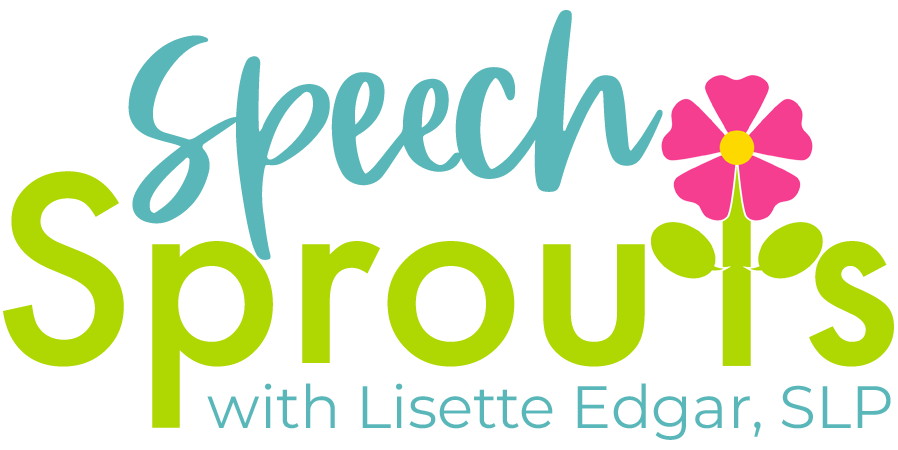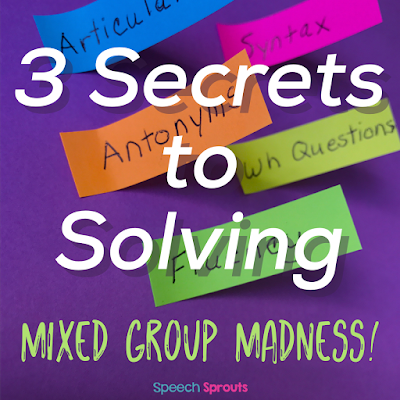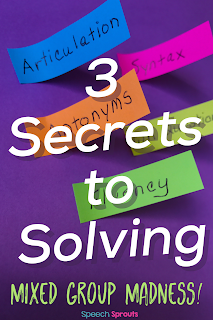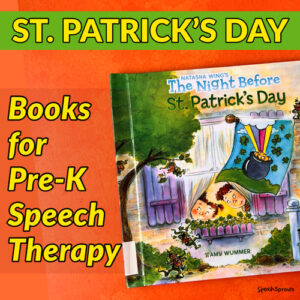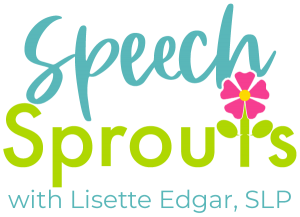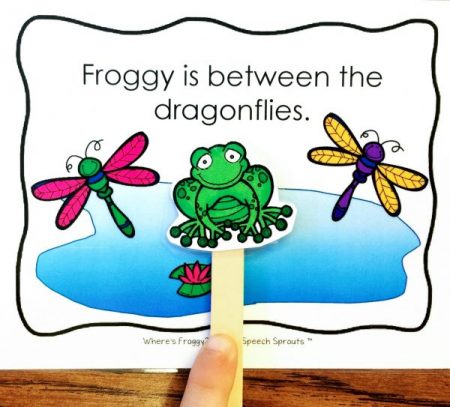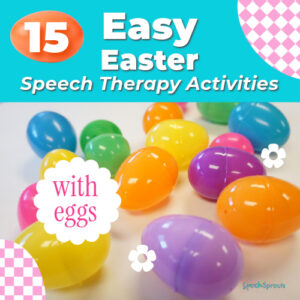
3 Sure-Fire Secrets to Solving Mixed-Group Madness
Mixed groups are challenging in speech therapy. I won’t lie.
If feel like you need octopus arms and an extra set or two of eyes to shuffle cards and papers and take data all the while you are trying to keep wiggly children engaged in speech therapy(whew!), you are not alone. Don’t worry, I am going to share some of my best secrets to end the madness. Keep reading, I’ve got you!
The reality for most school-based speech-language pathologists is that mixed groups are inevitable.
Class schedules, specials schedules, and principal or district mandates on where we can and can’t pull a child for speech therapy factor into grouping. Then there’s our own juggling act of serving multiple campuses and having limited time at each campus. It pretty much makes mixed groups a certainty in a school setting.
Mixed groups can include children of varying ages and grade levels, varying developmental levels and certainly varying IEP goals. Small homogeneous groups are often just not possible.
In addition to the diverse needs of these groups, the groups usually end up being bigger than we would like because caseloads for most SLPs are unreasonably large. No-one can serve 70-90 children individually or in small groups. Not. Humanly. Possible. Clone me, please!
I talked about the pain of scheduling in my last post 10 Tips for Conquering The Dreaded Speech Schedule. (Yes the pain is real friends!) So now you have your groups scheduled, and you may be wondering, “How on earth do I do this?” So…
Let’s talk about how to conquer mixed groups!
~~~~~~~~~~~~~~~~~~~~~~~~~~~~~~~~~~~~~~~~~~~~~
The Challenge: Off-task behaviors that happen as children wait for their “turn.”
The Fix: Reduce wait time and keep children busy between turns.
 |
| Read, retell and act out stories in mixed groups |
Use whole-group activities.
- Memory. (No need for a specific set of cards. Grab any set and prompt each student with their individual goals before they flip over two cards and try to make a match.)
- Go Fish
- Headbanz
- Bingo Riddles (Available in my store for holidays and seasons!)
Use motivational activities that keep student’s brains and hands occupied during wait-time.
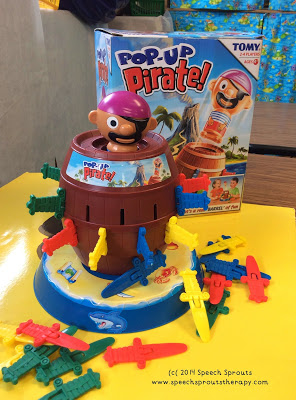 |
| Choose games that are quick-play. |
1. Games: Be sure they are quick-play and don’t take much time between turns.
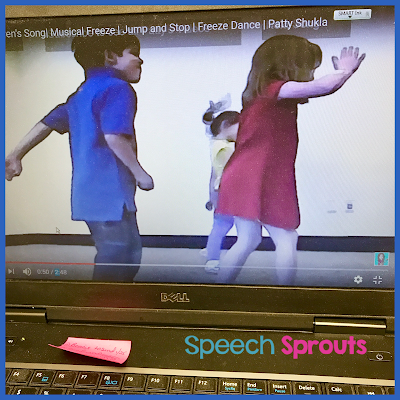 |
| S.T.O.P song. Take movement breaks in mixed groups |
Get children up and moving during the session to burn some energy.
- Have a 90-second dance party.
- Yell switch! and everyone has to take a different chair.
- Turn on one of many music and movement videos on YouTube for a minute or two. I love Patty Shukla’s videos such as Jump! for littles. It will give you a workout too!
2. Beanbag Games Toss a bean bag at any target- cards, baskets or even the trash can. Play for points and kids will love it.
3. Go on a Hunt. See how I do an articulation hunt with Wheels on the Bus. You can hide all sorts of things… eggs, stuffed animals, Christmas bows, spider rings, any set of category cards, clues to a hidden treasure. Start by prompting your student with their individual goals, then let them hunt. Put points on each bus or other objects to be hidden. Who can collect the most points?
Use a center-based strategy if you have room.
- Put out activities that encourage independent practice at each center.
- Written practice for older students.
- Listening tubes and word or sentence lists for self- practice. (Teaches them how to practice at home)
- Tally counter- how many repetitions of that articulation word can I do?
- Category sorts
- Matching: match association cards, beginning sound cards and more.
- A tablet with apps and games for vocabulary, phonological awareness, socials skills and more.
The Challenge: Addressing multiple goals at once.
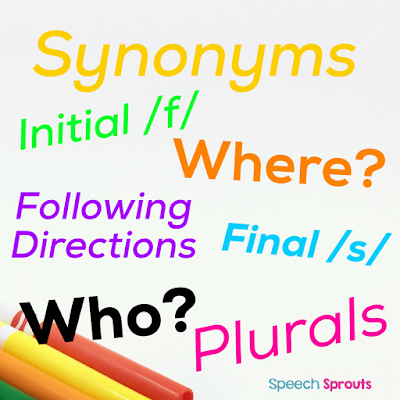 |
| Addressing multiple goals is a challenge! |
The Fix: Keep a list of prompts for each student in front of you as you work.
- Cards: Many commercial card sets have a summary list or key on a card. Use those in front of you instead of shuffling through each picture card. With just 3 or 4 cards in front of you, you can have a synonym list, an articulation list, etc at your fingertips.
- Lists: Make a list for each target. Keep the master lists in front of you or place individual lists in front of the student who is working on that skill, so you don’t need to visually hunt for the right prompt.
If list-making is too time-consuming, try Quick Lists!
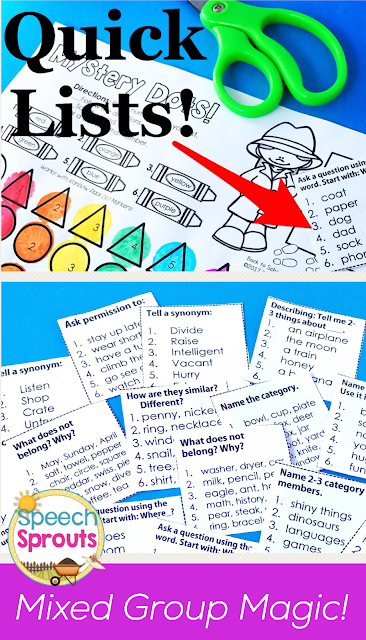 |
| Mixed Group Magic Quick Lists and Activities |
I am excited to tell you about these! These handy little gems are magic for mixed groups and are no-prep, other than print and cut the lists you need. I designed quick lists specifically to simplify your mixed groups, but they are also terrific for progress monitoring.
The Challenge: Data Taking
The Fix:
1. Take data on only one or two students per session. Then rotate and take data on another student or two the next time.
2. Have older students take their own data, then show you at the end of the session, so you can record it. This can be motivating and help them slow down and attend as well.
3. Record the data on one group sheet, then transfer later. Quick Lists have you covered again with this one! Check out this group sheet. Paste a quick list for each student on it, and you are ready to be a data-taking ninja.The group sheets are included in all Quick List sets.
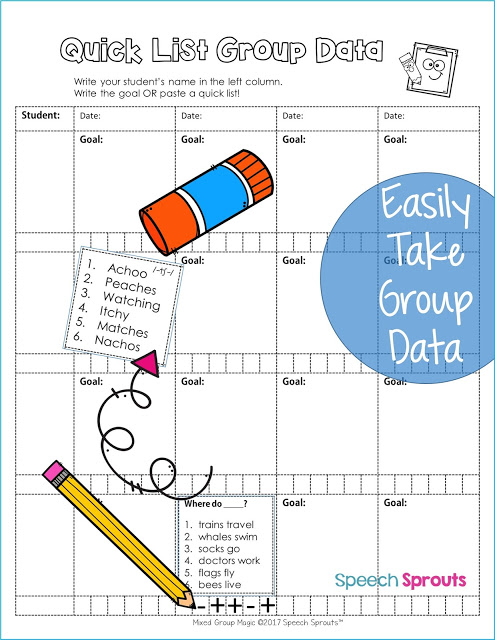 |
| Take data on one sheet in mixed groups |
I’ll bet you have more great ideas. What works for you? Please leave a comment, I would love to hear
them.
I hope you are feeling better now about your mixed groups. You can do this!
Until next time my friends,
Share it:
- Read more about: Uncategorized
